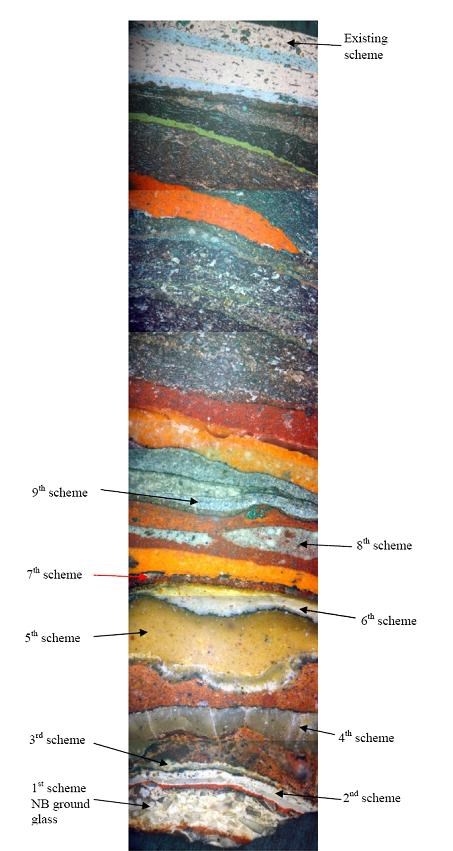Monday 26 Apr 2010
£10M TO INVEST IN THE FUTURE OF A BRUNEL MASTERPIECE
- Region & Route:
- Wales & Western: Western
- | Wales & Western
The most complex plan ever to refurbish the Royal Albert bridge has been finalised and Network Rail will soon be tendering for contract to carry out the improvement work.
The 151 year-old structure, which carries a busy mainline that is frequently used by around 30 trains each day, will be strengthened, restored and repainted over the next three years.
Corroded elements on the bridge will be repaired and extra efforts will also be taken to restore Brunel's original design. These include removing redundant bridge elements - lower diagonal bracings - installed in the 1970s and using special bolts that are similar in design to Victorian rivets.
The rail landmark and gateway into Cornwall will also be spruced up with a new lick of paint to significantly improve the surrounding environment. A total area of 20,000 square metres – about three football pitches – with 30 coats of paint on the main spans will be blast removed before being re-painted over, using a more effective three-coat painting system.
The Royal Albert bridge will be painted goose grey, so that it is compatible with the colour of the bridge when it was listed and the bridge's aesthetic can also be sustained for a longer period of time.
The structure was listed Grade 1 in 1952 by the English Heritage, which has also backed the improvement scheme.
The effort to improve the bridge has also helped trace the bridge’s original colour of pale stone (off-white) that it was painted in 1859, replacing the missing piece that completes the jigsaw of Royal Albert bridge’s colourful history.
Two 1m square patches of the existing paint layers on the bridge will be preserved for posterity.
The discovery was made from an unprecedented paint analysis commissioned by Network Rail. It is to help Network Rail’s engineers understand the bridge’s existing complex paint system and define an effective approach to repaint the structure’s two main spans.
Chris Rayner, route director, Network Rail said: “"This effort has affirmed a piece of Royal Albert bridge’s history that has been obscured under 30 coats of paint for more than a century. It will also be the first time that the colours of the bridge is officially chronicled for posterity.
"Most importantly, the industry has an ambition to transform the railway on Great Western in the coming years and our investment on the Royal Albert bridge will play a part. It will be the most complex refurbishment work since the bridge was built and will inject a new lease of life into this vital rail link, keeping it robust for many years to come.”
The Royal Albert bridge has been painted over on 20 occasions since it was completed in 1859. However, its parapets and main spans were repainted in red-brown for £1,700 in less than a decade.
In 1868, the ‘I K Brunel Engineer 1859’ lettering on the portals of the two main spans were painted at a mere cost of £2.31.
Network Rail is planning to start work on site by the end of the year.
Steps will be taken to protect the environment while the work is being carried out. For example, the bridge will be encapsulated to prevent dust and/or paint from escaping and a special extraction system will be created to remove any waste materials without contaminating the surrounding.
The bridge has carried more than 1 billion tonnes of rail traffic since it was built.
Notes to editors
2. Much of the evidence of subsequent paint schemes was removed after 1887. Based on a black and white postcard from 1924, it is believed that the portals and spans were both painted in the same colour thereon.
3. The bridge stands on three pier superstructures, which support the weight of the moving trains and the bridge.
Building the centre pier in the middle of River Tamar was one of the biggest challenges during the construction as the foundations of the centre pier were to be sited on rock 90 feet below high water mark. Brunel took inspiration from his father’s work on the London Tunnel when constructing the piers, by using a form of diving bell with compressed air.
To build the centre pier, Brunel built a cylinder 85ft deep and 37ft in diameter – around the size of an 8-storey high building. This was floated into the middle of the river and sunk. The water was pumped out and the top sealed. Compressed air was then pumped into the cylinder to allow up to 40 men to work within the tube.
Contact information
Passengers / community members
Network Rail national helpline
03457 11 41 41
Latest travel advice
Please visit National Rail Enquiries
Journalists
Network Rail press office -Western route
MediaRelationsWestern@networkrail.co.uk
About Network Rail
We own, operate and develop Britain's railway infrastructure; that's 20,000 miles of track, 30,000 bridges, tunnels and viaducts and the thousands of signals, level crossings and stations. We run 20 of the UK's largest stations while all the others, over 2,500, are run by the country's train operating companies.
Usually, there are almost five million journeys made in the UK and over 600 freight trains run on the network. People depend on Britain's railway for their daily commute, to visit friends and loved ones and to get them home safe every day. Our role is to deliver a safe and reliable railway, so we carefully manage and deliver thousands of projects every year that form part of the multi-billion pound Railway Upgrade Plan, to grow and expand the nation's railway network to respond to the tremendous growth and demand the railway has experienced - a doubling of passenger journeys over the past 20 years.
Follow us on Twitter: @networkrail
Visit our online newsroom: www.networkrailmediacentre.co.uk

